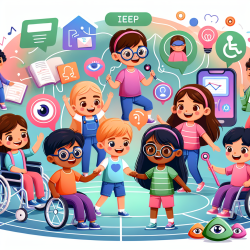Introduction: The Growing Need for Speech Therapy in Schools
In recent years, the demand for speech therapy in schools has been on the rise. This is largely due to an increased awareness of communication disorders and their impact on a child's educational success and social development. As government health regulators, understanding the role of innovative solutions like telepractice in addressing these needs is crucial.
Understanding Telepractice: A Research-Driven Approach
Telepractice, or online therapy, is an evidence-based method of delivering speech-language services. Research has consistently shown that telepractice can be as effective as in-person therapy, providing a viable alternative for schools facing shortages of qualified speech-language pathologists.
Studies have highlighted several benefits of telepractice:
- Increased accessibility for students in remote or underserved areas.
- Flexibility in scheduling, reducing disruptions to the school day.
- Cost-effectiveness, as it eliminates travel expenses for therapists.
How TinyEYE Is Leading the Way
TinyEYE is at the forefront of delivering high-quality online therapy services to schools. Our platform is designed to be user-friendly for both children and educators, ensuring seamless integration into the school environment. Our therapists are highly trained and utilize data-driven strategies to tailor interventions to each child's unique needs.
Evidence of Success: Data-Driven Outcomes
Data from numerous studies and our own program evaluations have shown significant improvements in students' communication skills when participating in telepractice sessions. For example, a recent study found that children who received online speech therapy made comparable progress to those receiving traditional face-to-face therapy.
These outcomes are not only promising but also highlight the potential of telepractice to meet the growing demand for speech therapy in schools.
Implications for Policy and Practice
For government health regulators, the implications of these findings are significant. By supporting and integrating telepractice into school-based therapy services, we can ensure that more children have access to the support they need. This approach aligns with public health goals of improving educational outcomes and enhancing the well-being of children.
Conclusion: A Call to Action
As we continue to explore innovative solutions for speech therapy in schools, it is essential to rely on research-driven methods like telepractice. By doing so, we can empower children to achieve their full communication potential and contribute positively to their communities.










